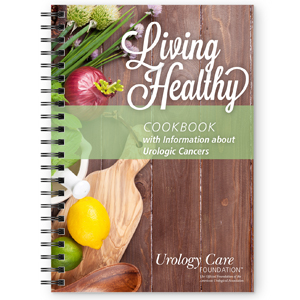Healthy Fall Recipe
Turkey Sausage Soup
This comforting, nourishing soup recipe, courtesy of Chef Mary Nolan, has a mix of protein, vegetables and love. It can be made in advance and stored in the fridge to enjoy for up to 5 days later.

Chef Mary Nolan is a recipe developer, cooking instructor, host and enthusiastic eater. She is currently the Executive Chef at Bon Appétit magazine.
“You eat with all of your senses. Recipes curated by color will look beautiful and help you enrich your meals.”
Total: 35 m | Prep: 20 m | Serves: 8
268 calories, 13 g fat, 676 mg sodium, 19 g carbohydrates, 4 g fiber, 20 g protein, 59 mg calcium, 638 mg potassium, 2 mg iron, 12 mg vitamin C
INGREDIENTS
3 tablespoons olive oil, divided
1 pound Italian turkey sausage
1 medium onion, diced (about 1½ cups)
3 medium carrots, diced
2 celery ribs, diced
3 cloves garlic, minced
½ teaspoon dried oregano
½ teaspoon kosher salt, plus more if desired
¼ teaspoon freshly ground black pepper, plus more if desired
8 cups (2 quarts) low-sodium chicken broth
1 (14.5 ounces) can petite diced tomatoes
1 cup uncooked ditalini pasta
1 cup kale, ribs removed, finely chopped (or spinach)
Freshly grated Parmesan cheese to sprinkle on top of each serving
PREPARATION
Heat one tablespoon of olive oil in a large Dutch oven and cook the turkey sausage over medium heat, breaking it up with a wooden spoon until it is browned, about 5 minutes.
Add remaining 2 tablespoons olive oil and reduce heat to medium-low. Add onion, carrot and celery and cook until onions are translucent and carrot and celery are bright and somewhat softened, about 10 minutes. Add garlic and cook 1 minute longer.
Return turkey sausage and any juices to the pot and add oregano, crushing between fingers to release aroma. Season with salt and pepper.
Add chicken broth and tomatoes and bring to a simmer. Stir in pasta and cook 10 minutes. Stir in kale and cook 5 minutes longer.
Check seasoning and add more salt and black pepper, if desired. Ladle into bowls and top with cheese.
Eating healthy may play a role in cancer prevention. Many cancers are linked to excess weight. Healthy eating also helps people during cancer treatment and recovery. Chemotherapy, surgery, radiation therapy and other cancer treatments can take a toll on the body. They may affect taste, smell, appetite and the ability to absorb nutrients from food.
If you or someone you love is dealing with cancer, talk with your doctor or care team about what is best to eat and drink during cancer treatments. They may refer you to a dietitian who can help you with your diet during and after treatments.
Here are some living healthy basics you can apply:
Stay Hydrated
Your body needs a certain amount of liquid to function well. This is called hydration. Water, fruits, vegetables, smoothies, some soups, decaffeinated tea and unsweetened drinks are some examples for how to keep hydrated.
Eat Healthy
When choosing foods, try reaching for whole fruits, vegetables, legumes (like peas or beans) and other low-calorie options. Consider eating whole grains instead of refined grains. For example, choose whole-grain bread, pasta and cereal instead of refined foods like pastries, white rice or sugary cereals.
Check Nutrition Labels
Learn what to look for on the label. The US Food and Drug Administration (FDA) requires food companies to provide certain information on the nutrition labels printed on food packages. Nutrition labels can be filled with useful clues. When you eat something from a box, bag or fast food restaurant, look for options with less sugar, salt and calories.
Commit to Exercise
A doctor-approved workout may strengthen your body, improve your hormone levels and the way your immune system works. Even a little exercise to keep active can make a difference.
Stop Tobacco Use
Tobacco can cause cancer. There are benefits to stopping tobacco use at any age. Talk to your doctor if you are having trouble quitting the use of tobacco.
Plan Ahead for Travel
Pack healthy snacks for long trips or doctor visits. Try packing a small cooler with hummus and vegetables or apples and peanut butter. Or keep it simple with whole-grain crackers or trail mix. When you eat out, try to choose salads or grilled items instead of fried foods. When grocery shopping on the road, look for low-fat prepared meals, salads or rotisserie chicken options.

Living Healthy Cookbook
Part of managing cancer includes a healthy diet and lifestyle. This educational cookbook has recipes from celebrity chefs and is designed to help those affected by urologic cancers.
Cookbook funding and support provided by Pfizer Oncology.
UrologyHealth.org | FALL 2021 | UROLOGYHEALTH extra